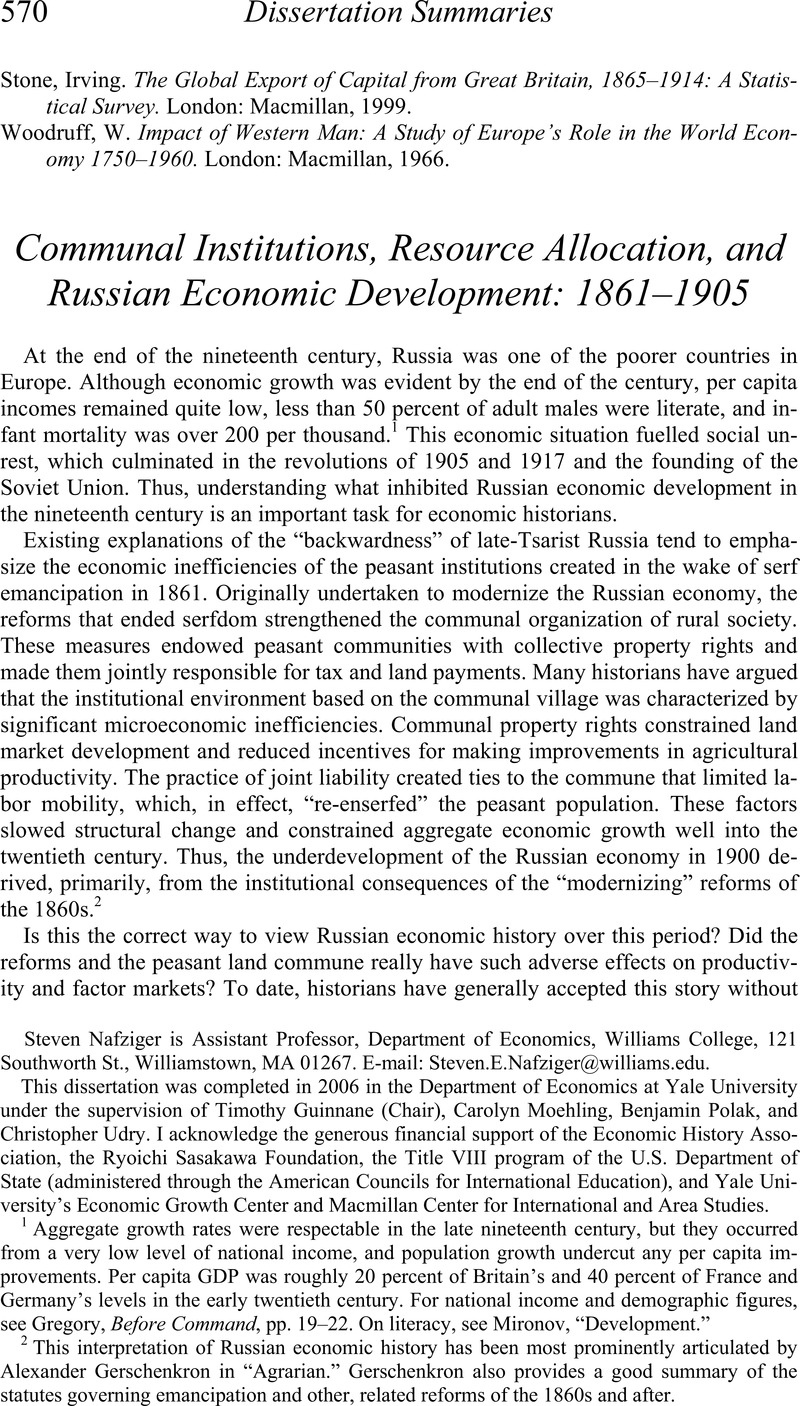Crossref Citations
This article has been cited by the following publications. This list is generated based on data provided by Crossref.
Castaaeda Dower, Paul
and
Markevich, Andrei
2013.
Land Tenure and Productivity in Agriculture: The Case of the Stolypin Reform in Late Imperial Russia.
SSRN Electronic Journal,
2016.
Two Roads Diverge.
p.
227.
Guimaraes, Bernardo
and
Sheedy, Kevin Daniel
2021.
Institutional Specialization.
SSRN Electronic Journal ,
Guimaraes, Bernardo
and
Sheedy, Kevin D.
2024.
Institutional specialization.
Journal of International Economics,
Vol. 150,
Issue. ,
p.
103924.
Popoola, Olufunke Mercy
Mutai, Noah Cheruiyot
Dervishaj, Valdrin
Nguyen, Cuong Manh
Kumari, Sushma
and
Bhatia, Gunjan
2024.
Exploring the impact of oil revenue on Nigeria's economic growth: A non‐linear autoregressive distributed lag model.
OPEC Energy Review,
Vol. 48,
Issue. 4,
p.
293.



